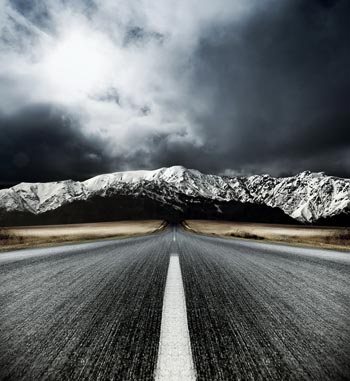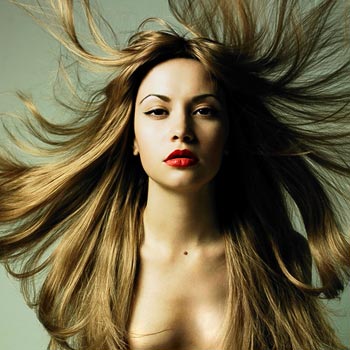Out with the old (photos) - Editing Tips
Posted Wednesday, 5 January 2011 by Ellen Boughn in
Ellen Boughn,
Photography
This post is illustrated with images that have not only passed the test with Crestock editors, but are among their favorites. Next week, you'll see a large group of images from the editors to inspire your work in 2011.
Editing may seem like a lot of work that only results in fewer images online...not more. How could that be a good thing for you? Because every image that you submit requires an expense of your overhead: post production, keywording, model release attachment and uploading time. Not only is it a time waster to be a sloppy self-editor, but it can harm your images' standing in search results if you have too many similars of even a really great shot.

© megejaz/Crestock
A Crestock editor says, "This is a great image that looks like it was shot at a concert but was not. You don't have to worry about model releases but yet you feel like you are at an event. The hands with the lighters could also represent solidarity."
Edit while shooting
Shoot smart. Compose your images in the camera when you can. Every time you can get the money shot with the fewest number of images, you have maximized your effort and time. Remember time is money!
Shoot to kill with a high precision eye rather than taking the shotgun approach. You'll have fewer (and better) images to deal with in an initial edit.
Don't download every little pic from your camera. Delete!

© kwest/Crestock
An editor likes this image for very good reasons writing, "This image is dramatic, graphic, conceptual and packs a lot of impact. A dramatic landscape that is generic enough to be used in many projects."
Workflow
There are many tricks and software tools to assist you in getting your photos from the camera to the final edit for submission. I use Expression Media but my requirements as an editor differ from yours. No matter what you chose to use to edit your shoots, one key factor remains: Save at least one copy on an external drive and many photographers suggest that you have three copies – one of them stored in a different location. Upload to the external drives after major edits.
Keep an unedited, untouched copy and save subsequent changes.
Some software allows you to create 'albums' but you don't have to save the photos to put them in the albums. They are already saved in the master file. (This, another "DUH" piece of advice, applies to programs such as Photoshop Express and iPhoto.) I recently helped a friend in New York clean up her computer that had 12,000 photos stored on the hard drive. Once we finished dumping the photos that she never needed to save in the first place and the duplicates she had created to put into albums, she was left with only 2,000 photos. Don't be burdened by unnecessary photos.

© tysonkoska/Crestock
The editor says he laughed out loud when he pulled this picture up from the thumbnail. Animal humor images are very popular and not always easy to find. The eye contact is great in this image and the ostrich looks as though he is talking to you which means you can apply different types of copy.
Look at all your images at the thumbnail size before you begin to edit. Remember this is the size that your buyer will be seeing first. If your image doesn't pass the thumbnail test, it will not be downloaded often. Images that have emotional impact, clean (or at least not busy) backgrounds and a graphically simple composition are best to be 'read' small.
Scan an entire page of thumbnails as the first step in an edit. Looking at the full page at once, zero in on the images that catch your eye. These are the photos that you should ensure get a second look before you cut them. (Unless they popped out because there was something terribly wrong with them).
Then take an unbiased look at the remaining images. Cut anything that has flaws that will take a lot of time in postproduction to fix. You should be shooting instead of fixing unless it's a one in a lifetime image.

© Yuri_Arcurs/Crestock
A Crestock editor loved the look on this woman's face saying, "She is a boomer who is relaxing and enjoying retirement. Lots of room for type, good image for a double page spread. I like that she is not looking at the camera but she still engages the viewer."

© egorr/Crestock
A Crestock editor summed up this photo with one word – gorgeous - saying, "Beauty and hair images are very, very popular. This model is gorgeous, her hair is gorgeous, the lighting is gorgeous and the eye contact is great. Very impactful image."
Editing
Be brutal. Do you really need to save 15 similar photos of that photo? Are the differences hardly noticeable?
A well-known photographer has said something along the lines of the following, "Don't save every photo that you attach a warm and fuzzy memory to just for that reason. The buyer doesn't share that memory."
Once you have finished editing and are ready to submit, EDIT AGAIN.
Refresh your memory or read for the first time an earlier post where I give more specifics about final editing for submission.
Want the editors to hate you? Send them hundreds of similar images and increase their workload needlessly. This will hurt you with buyers too because the editors may not catch all the similars, then the images will drop lower in the image ranking and buyers won't find them.*
*How? If you divide licenses among many similar images, none of them will accumulate as many downloads as one or two of the best. They will all rank lower when a user sorts on most downloaded...as many do.
Ellen Boughn's best-selling book, Microstock Money Shots, is filled with insights, tips and advice on how to create commercial images and improve your work flow to profit from photography whether you're a hobbyist or a professional photographer.
Order now on Amazon.com